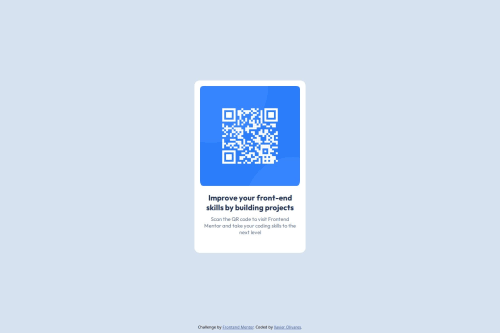
Solution retrospective
What challenges did you encounter, and how did you overcome them?
First time using github, it tooks me a while to find out how to add/remove files and edit
What specific areas of your project would you like help with?General tips on optimization.
Code
Loading...
Please log in to post a comment
Log in with GitHubCommunity feedback
No feedback yet. Be the first to give feedback on Xavier O.'s solution.
Join our Discord community
Join thousands of Frontend Mentor community members taking the challenges, sharing resources, helping each other, and chatting about all things front-end!
Join our Discord